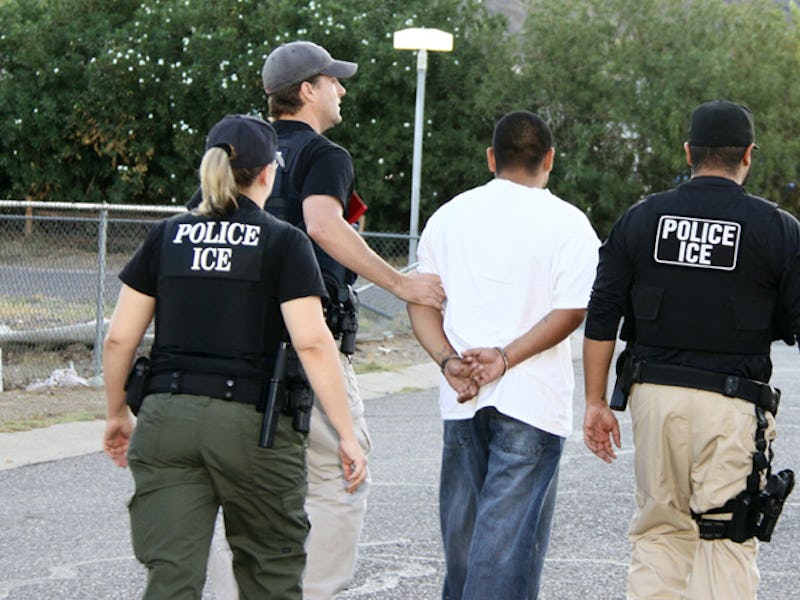The Ability to Dehumanize Immigrants Stems From a Unique Part of the Brain
This abhorrent behavior isn't just fueled by hatred.

In a video in May, President Donald Trump referred to unauthorized immigrants trying to cross the Mexico-US border as “animals.” He’s continuing a long tradition in which marginalized groups are dehumanized by people attempting to legitimize their own inhumane behavior, long considered a demonstration of hatred. Now, neuroscientists have discovered that the brain actually processes of dislike and dehumanization differently — meaning that people who see others as subhuman don’t simply dislike them intensely. Their brains actually categorize them as less than human.
In a statement released Monday, the neuroscientists behind the new study, published in the May edition of the Journal of Experimental Psychology, explain how their finding relates to the Trump administration’s justification of separation migrant children from their families. Under Trump’s “zero tolerance” immigration policy, more than 23,000 children have been separated from their families while attempting to cross the US-Mexico border and placed in detention centers away from their parents. This is easier to do, the paper suggests, for people who don’t see those children as humans.
“High dehumanization and low prejudice is the perfect profile of paternalism,” Emile Bruneau, Ph.D., study co-author and director of the Peace and Conflict Neuroscience Lab at the University of Pennsylvania, said in the statement. He explains that Americans who can accept Trump’s zero tolerance policy might not do so out of hatred but because they think doing so is natural; they may feel, he says, that “these children are just less human and less deserving of moral concern.”
An ICE arrest made in 2011.
Through a series of experiments, Bruneau and his team determined that dehumanization and dislike are processed by two completely separate regions of the brain. In turn, this suggests that different psychological processes fuel the two emotional actions.
The scientists tested for this by measuring the brain activity of 27 study participants with functional magnetic resonance imaging (fMRI) as they rated how they felt about different groups of people. They used some pretty offensive stereotypes, dividing populations into “high status” groups like Europeans and surgeons and “low status” groups like the Roma and the homeless for the purposes of the experiment. The participants’ brains were also monitored as they evaluated how they felt about animals, including puppies and rats.
Evaluations of human groups and animals were made on a “cold” to “warm” scale, and the extent to which various groups were dehumanized was measured by asking participants to place the groups on the popular (but inaccurate) “Ascent of Man” scale. At first, the team thought that the participants wouldn’t admit if they saw others as less than fully human — but, according to the team’s statement, “many people had no problem blatantly saying so.”
Changes in brain activity were arguably as dramatic as the statements the participants made. When study participants judged groups of people and animals as less than human, the team noticed increased brain activity in the inferior frontal cortex of their brains. Conversely, there was less activity in this region when the participants positively evaluated what they saw as being “high-status human groups.”
“When people are dehumanizing others, they are mobilizing different brain regions than when they are registering dislike,” explains Bruneau. “Brain regions sensitive to dehumanizing other groups were not sensitive to dislike. And brain regions activated when registering dislike for those same groups were not activated when thinking about how human those groups are.”
So what is Trump thinking when he calls unauthorized immigrants “animals”? This research suggests that he sees those humans as literally less human. And knowing that some people view humanity that way, Bruneau says, could “prove practically useful” in crafting interventions and reducing intergroup conflict. Getting people to like each other more isn’t very important, he explains. What matters is seeing each other as humans.